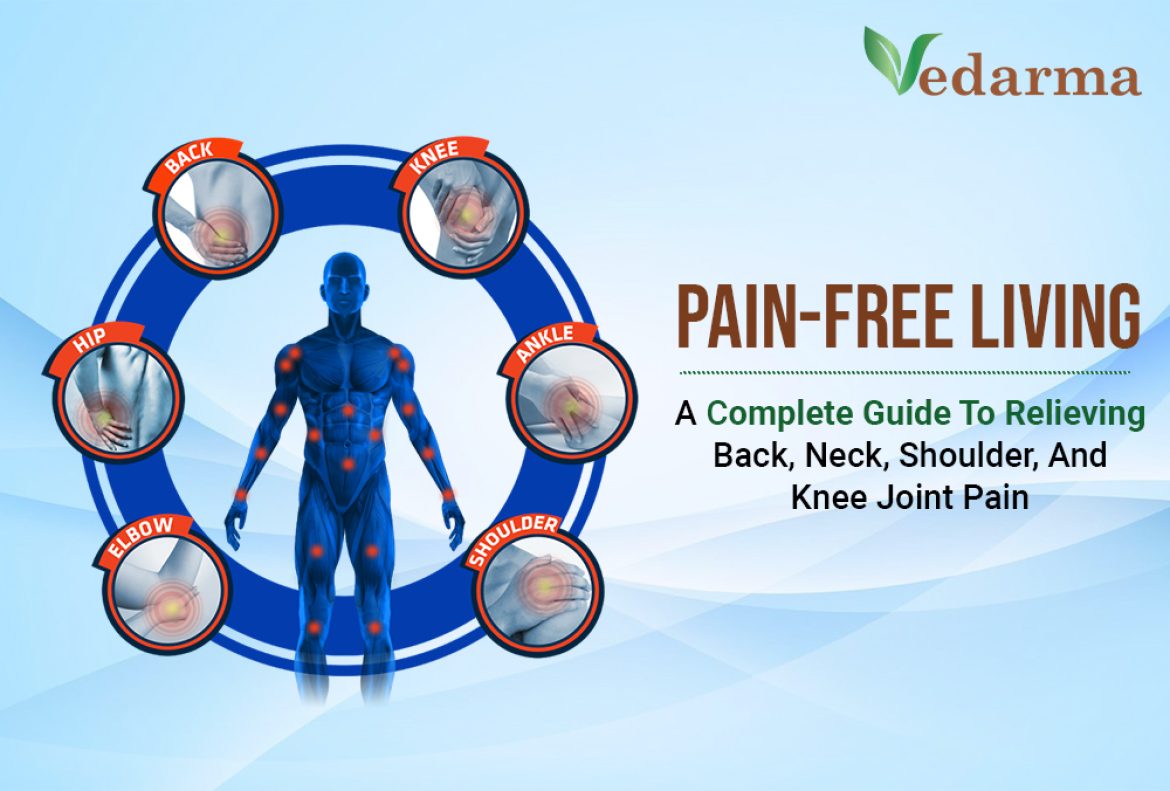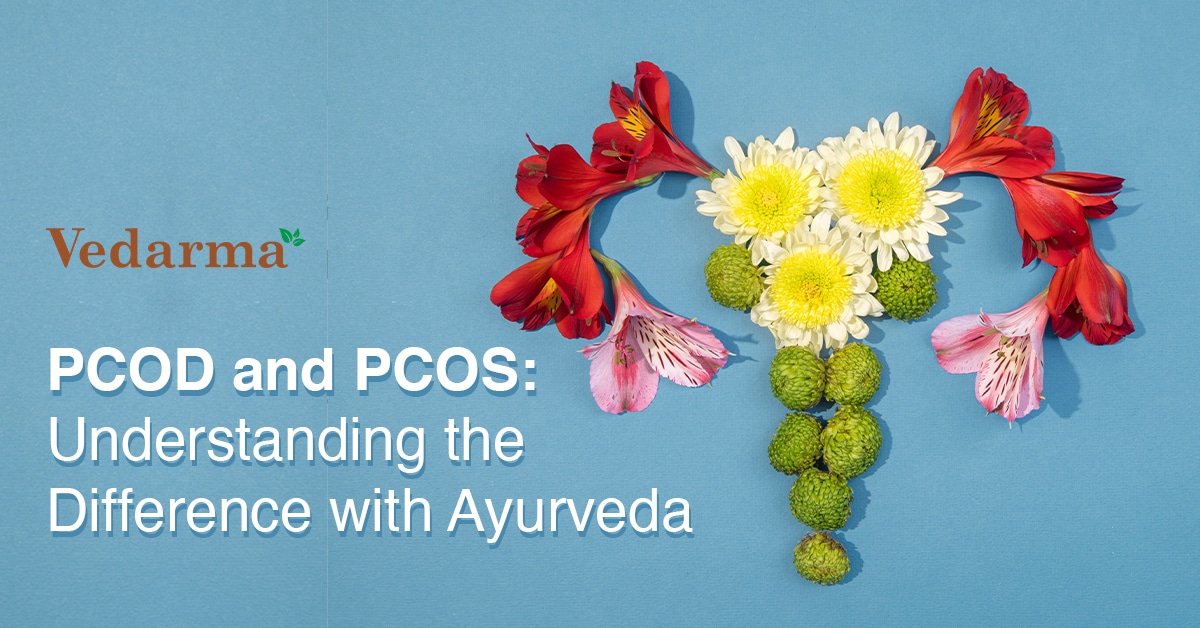Pain-Free Living: A Complete Guide To Relieving Back, Neck, Shoulder, And Knee Joint Pain

In the hustle and bustle of modern life, it’s not uncommon to experience nagging aches and pains, particularly in areas like the back, neck, shoulders, and knees. These discomforts can arise due to various reasons, including poor posture, sedentary lifestyles, repetitive movements, or even injury. However, fret not, for there are effective strategies and remedies to help alleviate and prevent such pains. In this comprehensive guide, we will explore the causes, symptoms, and holistic approaches to finding relief for back pain, neck pain, shoulder pain, and knee joint pain.
What Is Back Pain?
Back pain refers to any discomfort or pain experienced in the back, typically in the lower region but can also occur in the upper or middle back. It is a prevalent condition that can range from a dull, nagging ache to sharp, intense pain. Back pain can be acute, lasting for a short duration, or chronic, persisting for more than three months.
What Are The Causes Of Back Pain?
- Muscle Strain: Overexertion, improper lifting techniques, or sudden movements can strain the muscles and ligaments in the back, leading to pain.
- Poor Posture: Prolonged sitting or standing with improper spinal alignment can place stress on the back muscles and contribute to pain.
- Herniated Disc: The intervertebral discs, which act as cushions between the vertebrae, can bulge or rupture, causing pressure on nearby nerves and resulting in back pain.
- Spinal Conditions: Conditions like sciatica, osteoarthritis, and spinal stenosis can lead to chronic back pain due to nerve compression or degeneration.
- Lifestyle Factors: Sedentary lifestyles, obesity, and lack of regular exercise can weaken the back muscles and increase the risk of back pain.
- Emotional and Psychological Factors: Stress, anxiety, and depression can contribute to muscle tension and exacerbate back pain.
What Are The Symptoms Of Back Pain?
- Dull, aching, or sharp pain in the back that may be localized or radiate to the buttocks, legs, or feet.
- Stiffness and reduced range of motion in the back.
- Muscle spasms or cramping.
- Difficulty standing up straight or walking.
- Pain worsened by certain movements, such as bending, lifting, or twisting.
- Tingling or numbness in the legs or feet (in cases of nerve compression).
Holistic Approaches To Treat Back Pain:
- Exercise and Physical Activity: Engaging in regular low-impact exercises, such as walking, swimming, or yoga, can strengthen the back muscles, improve flexibility, and reduce pain.
- Posture Correction: Practicing good posture and ergonomics while sitting, standing, and lifting can alleviate strain on the back and prevent future pain.
- Mind-Body Techniques: Mindfulness meditation, deep breathing exercises, and progressive muscle relaxation can reduce stress, promote relaxation, and ease muscle tension.
- Heat and Cold Therapy: Applying heat packs or taking warm baths can relax muscles and increase blood flow to the affected area. Cold packs or ice massages can help reduce inflammation and numb pain.
- Herbal Remedies: Some herbs, such as turmeric, ginger, and devil’s claw, possess anti-inflammatory properties that can aid in reducing back pain. Consult a healthcare professional before using any herbal supplements.
- Manual Therapies: Chiropractic adjustments, osteopathic manipulative therapy, and massage therapy can help relieve muscle tension, improve spinal alignment, and reduce pain.
- Acupuncture: This ancient Chinese practice involves inserting thin needles into specific points on the body to stimulate energy flow and alleviate pain.
- Lifestyle Modifications: Maintaining a healthy weight, quitting smoking, staying hydrated, and getting adequate sleep can contribute to overall back health.
What Is Neck Pain?
Neck pain refers to discomfort or pain experienced in the cervical region, which is the area of the spine located in the neck. It can range from mild stiffness to severe, sharp pain and can be acute or chronic in nature. Neck pain is a common condition that can affect individuals of all ages and can result from various factors.
What Are The Causes Of Neck Pain?
- Poor Posture: Sitting or standing with a slouched posture for extended periods can strain the muscles, ligaments, and joints in the neck.
- Muscle Strain: Overuse of the neck muscles due to activities like repetitive movements, carrying heavy loads, or sleeping in an awkward position can cause muscle strain and subsequent pain.
- Neck Injuries: Whiplash from car accidents, sports-related injuries, or falls can lead to neck pain and stiffness.
- Herniated Disc: The discs between the cervical vertebrae can herniate or bulge, compressing nearby nerves and resulting in neck pain.
- Osteoarthritis: Degenerative changes in the cervical spine due to aging can lead to the development of osteoarthritis, causing neck pain and stiffness.
- Emotional and Psychological Factors: Stress, anxiety, and tension can cause muscle tightness in the neck and contribute to pain.
What Are The Symptoms Of Neck Pain?
- Pain or discomfort in the neck that may radiate to the shoulders, upper back, or arms.
- Stiffness and reduced range of motion in the neck.
- Headaches, especially at the base of the skull.
- Muscle spasms or tightness in the neck and upper back.
- Numbness or tingling in the arms or hands.
- Difficulty turning the head or holding it in certain positions.
Holistic Approaches To Treat Neck Pain:
- Posture Correction: Maintaining proper posture while sitting, standing, and using electronic devices can alleviate strain on the neck. Ergonomic adjustments to workstations and using supportive pillows for sleep can also help.
- Neck Exercises and Stretches: Gentle neck exercises and stretches can improve flexibility, strengthen the neck muscles, and relieve tension. Consult with a healthcare professional or physical therapist for appropriate exercises.
- Heat and Cold Therapy: Applying heat pads or warm showers can relax the muscles and increase blood flow to the neck area. Cold packs or ice massages can help reduce inflammation and numb pain.
- Mind-Body Techniques: Mindfulness meditation, relaxation techniques, and deep breathing exercises can reduce stress, alleviate muscle tension, and promote relaxation.
- Massage Therapy: Professional massage therapy targeting the neck and upper back can help relieve muscle tension, increase blood circulation, and reduce pain.
- Acupuncture: This traditional Chinese therapy involves the insertion of thin needles into specific points to stimulate energy flow and promote pain relief.
- Herbal Remedies: Certain herbs, such as chamomile, lavender, and peppermint, have calming and pain-relieving properties. Herbal teas or topical creams may offer temporary relief. Consult with a healthcare professional before using herbal remedies.
- Lifestyle Modifications: Regular exercise, maintaining a healthy weight, managing stress, and getting adequate sleep contribute to overall neck health.
- Ergonomic Adjustments: Ensuring proper ergonomics in workspaces, using supportive pillows, and taking breaks from prolonged sitting or repetitive tasks can reduce strain on the neck.
What Is Shoulder Pain?
Shoulder pain refers to discomfort or pain felt in the shoulder joint or the surrounding structures, including muscles, tendons, ligaments, and bones. It is a common condition that can range from mild to severe and can impact the mobility and function of the shoulder.
What Are The Causes Of Shoulder Pain?
- Rotator Cuff Injuries: Tears, strains, or inflammation of the rotator cuff tendons, which stabilize the shoulder joint, can lead to pain and a limited range of motion.
- Frozen Shoulder: Also known as adhesive capsulitis, this condition involves the thickening and tightening of the shoulder capsule, resulting in pain and restricted movement.
- Shoulder Impingement: The rotator cuff tendons can become compressed or pinched between the bones of the shoulder, causing pain and inflammation.
- Shoulder Arthritis: Osteoarthritis or rheumatoid arthritis can cause degeneration and inflammation in the shoulder joint, leading to pain and stiffness.
- Shoulder Bursitis: Inflammation of the bursae (fluid-filled sacs) located between the tendons and bones of the shoulder can result in pain and limited mobility.
- Shoulder Dislocation: The shoulder joint can become partially or completely dislocated due to trauma or repetitive stress, causing severe pain and instability.
- Tendonitis: Inflammation of the tendons in the shoulder, often caused by repetitive overhead movements, can lead to pain and limited range of motion.
- Poor Posture and Muscle Imbalances: Rounded shoulders, forward head posture, and weak muscles in the upper back and shoulders can contribute to shoulder pain.
What Are The Symptoms Of Shoulder Pain?
- Pain or discomfort in the shoulder joint, upper arm, or upper back.
- Limited range of motion and difficulty performing daily activities, such as reaching or lifting.
- Weakness or instability in the shoulder.
- Stiffness or tightness in the shoulder joint.
- Swelling or tenderness around the shoulder area.
- Pain worsened by certain movements or activities, such as reaching overhead or carrying heavy objects.
Holistic Approaches To Treat Shoulder Pain:
- Rest and Immobilization: Giving the shoulder adequate rest and avoiding activities that exacerbate pain can promote healing and reduce inflammation.
- Gentle Shoulder Exercises: Performing specific range-of-motion exercises and gentle stretches can improve flexibility, strengthen the shoulder muscles, and reduce pain.
- Heat and Cold Therapy: Applying heat packs or warm showers can relax muscles and increase blood flow to the shoulder area, promoting healing. Cold packs or ice massages can help reduce inflammation and numb pain.
- Posture Correction: Practicing good posture and ergonomic adjustments in workstations can alleviate strain on the shoulder and promote proper alignment.
- Manual Therapy: Seeking the assistance of a skilled physical therapist or chiropractor for techniques like joint mobilization, soft tissue manipulation, or myofascial release can relieve pain and improve shoulder function.
- Acupuncture: This traditional Chinese therapy involves the insertion of thin needles into specific points to stimulate energy flow and promote pain relief.
- Mind-Body Techniques: Mindfulness meditation, relaxation techniques, and deep breathing exercises can reduce stress, alleviate muscle tension, and promote relaxation.
- Herbal Remedies: Certain herbs like arnica, turmeric, and ginger possess anti-inflammatory properties that may aid in reducing shoulder pain. Consult with a healthcare professional before using herbal remedies.
- Lifestyle Modifications: Maintaining a healthy weight, regular exercise, and avoiding repetitive or overhead movements can help prevent shoulder pain and promote overall shoulder health.
What Is Knee Joint Pain?
Knee joint pain refers to discomfort or pain experienced in the knee joint, which is the junction where the thigh bone (femur) and shin bone (tibia) meet. It is a common condition that can range from mild to severe and can affect individuals of all ages.
What Are The Causes Of Knee Joint Pain?
- Osteoarthritis: The most common cause of knee joint pain, osteoarthritis, occurs due to the gradual breakdown of the protective cartilage in the knee joint, resulting in pain, stiffness, and reduced mobility.
- Knee Injuries: Acute injuries like ligament tears (such as an anterior cruciate ligament or ACL tear), meniscus tears, or fractures can cause sudden knee pain and instability.
- Tendinitis: Inflammation of the tendons in the knee, such as patellar tendinitis or quadriceps tendinitis, can result from overuse or repetitive stress, leading to pain and swelling.
- Bursitis: Inflammation of the bursae (small fluid-filled sacs) in the knee joint can cause pain and swelling.
- Runner’s Knee: Also known as patellofemoral pain syndrome, it is characterized by pain around the kneecap and is commonly seen in runners or individuals who engage in repetitive knee movements.
- Knee Ligament Sprains: Sprains of the knee ligaments, such as the medial collateral ligament (MCL) or lateral collateral ligament (LCL), can cause pain, instability, and swelling.
- Overuse or Repetitive Strain: Continuous stress or overuse of the knee joint, such as in certain occupations or sports, can lead to knee pain and inflammation.
What Are The Symptoms Of Knee Joint Pain?
- Pain or discomfort in the knee joint, which can range from mild to severe.
- Swelling or inflammation around the knee joint.
- Stiffness and reduced range of motion in the knee.
- Instability or feeling of giving way in the knee.
- Difficulty bearing weight on the affected knee.
- Clicking, popping, or grinding sensations during movement.
Holistic Approaches To Treat Knee Joint Pain:
- Exercise and Physical Therapy: Engaging in low-impact exercises, such as swimming, cycling, or gentle strength training, can help strengthen the muscles around the knee, improve flexibility, and reduce pain. Working with a physical therapist can provide targeted exercises and guidance.
- Weight Management: Maintaining a healthy weight can reduce the stress and strain on the knee joints, alleviating pain and slowing down the progression of arthritis.
- Hot and Cold Therapy: Applying heat packs or warm showers can help relax muscles and increase blood flow to the knee joint, promoting healing. Cold packs or ice massages can reduce inflammation and numb pain.
- Acupuncture: This traditional Chinese therapy involves the insertion of thin needles into specific points to stimulate energy flow and promote pain relief.
- Herbal Remedies: Certain herbs like ginger, turmeric, and Boswellia possess anti-inflammatory properties that may help reduce knee pain. Consult with a healthcare professional before using herbal remedies.
- Mind-Body Techniques: Mindfulness meditation, relaxation techniques, and deep breathing exercises can reduce stress, alleviate muscle tension, and promote relaxation, which may help manage knee pain.
- Supportive Devices: Using knee braces, orthotic inserts, or supportive footwear can provide stability and relieve pressure on the knee joint.
- Dietary Modifications: Consuming a balanced diet rich in anti-inflammatory foods, such as fruits, vegetables, whole grains, and omega-3 fatty acids, may help reduce knee pain.
- Lifestyle Modifications: Avoiding high-impact activities, practicing proper body mechanics during movements, and taking regular breaks to rest the knees can prevent further damage and promote healing.
Note – In order to have an accurate diagnosis and guidance on the most appropriate treatment options, it’s important to consult with a healthcare professional before starting any new exercise regimen or treatment plan. Each person’s condition is unique, and a tailored approach is necessary for effective pain management. By adopting holistic approaches and combining them with medical guidance, individuals can find relief and improve their quality of life.
Conclusion
Back pain, neck pain, shoulder pain, and knee joint pain can be challenging to live with, but with the right knowledge and proactive steps, you can find relief and prevent future discomfort. By understanding the causes, symptoms, and targeted strategies for each type of pain, you empower yourself to take control of your well-being. Remember, it’s essential to listen to your body, practice self-care, and seek professional guidance when needed. Embrace a holistic approach to pain management, and you’ll pave the way toward a healthier, pain-free future.




